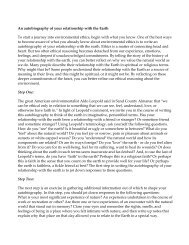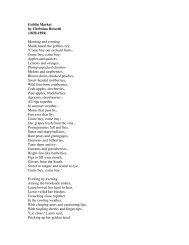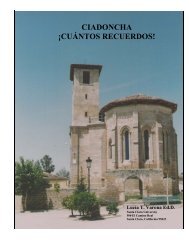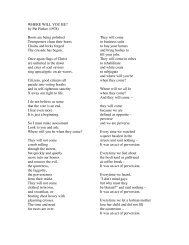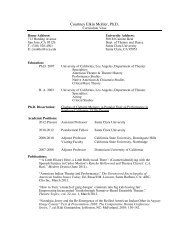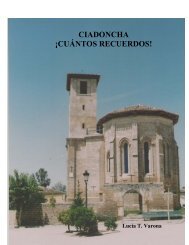ciadoncha; ¡cuántos recuerdos - Webpages at SCU - Santa Clara ...
ciadoncha; ¡cuántos recuerdos - Webpages at SCU - Santa Clara ...
ciadoncha; ¡cuántos recuerdos - Webpages at SCU - Santa Clara ...
Create successful ePaper yourself
Turn your PDF publications into a flip-book with our unique Google optimized e-Paper software.
Historic Context<br />
In 1954, the government realized th<strong>at</strong> closing the borders brought nothing more<br />
than poverty. Therefore, they began the phase of Intern<strong>at</strong>ional opening. Upon the<br />
beginning of the guerra fría (Cold War), Franco realized th<strong>at</strong> he had to leave behind<br />
many of the practices th<strong>at</strong> he had copied from the Italian Fascism, such as greeting with a<br />
raised arm, the oblig<strong>at</strong>ory hymns such as “Cara al sol” and the massive concentr<strong>at</strong>ions<br />
such as when he inaugur<strong>at</strong>ed the Ciudad Universitaria in 1943. He emphasized his bond<br />
with the C<strong>at</strong>holic Church and his anticommunist position. As a result, this brought about<br />
a new friendship- th<strong>at</strong> of with the United St<strong>at</strong>es. Thanks to this intern<strong>at</strong>ional opening, the<br />
economic situ<strong>at</strong>ion in Spain began to get better (Monlau, 2006).<br />
Many participants began to distribute the Americans milk. This was another<br />
motive for the girls to leave class. They had to go prepare the milk th<strong>at</strong> they l<strong>at</strong>er had to<br />
distribute to everyone in school (Personal interview, 2005).<br />
After the phase of the intern<strong>at</strong>ional opening, th<strong>at</strong> lasted from 1954 to 1960, came<br />
the phase of development. This was during the fabulous 1970s. The presence of foreign<br />
tourists was seen in Spain. This presence, especially those of the Swedes, caused a gre<strong>at</strong><br />
sens<strong>at</strong>ion for all th<strong>at</strong> they taught on the beaches. The arrival of the television changed the<br />
habit<strong>at</strong>s of the popul<strong>at</strong>ion th<strong>at</strong> no longer remained stuck to the radio, but instead g<strong>at</strong>hered<br />
around the TV either in their homes or in the “teleclubs” (cafeteria or bar-like places<br />
where people would go to w<strong>at</strong>ch television).<br />
Boys Promotion 1958-1964<br />
Photo provided by Arcadio Varona<br />
Nevertheless, Ciadoncha maintained its modesty. The uncoverings were seen on<br />
the television and were somewh<strong>at</strong> foreign to them. It is interesting to see the photos of<br />
the different classes of children in the schools of Ciadoncha. The economic situ<strong>at</strong>ion th<strong>at</strong><br />
crossed the country is reflected in the children’s faces and form of dress.<br />
128





